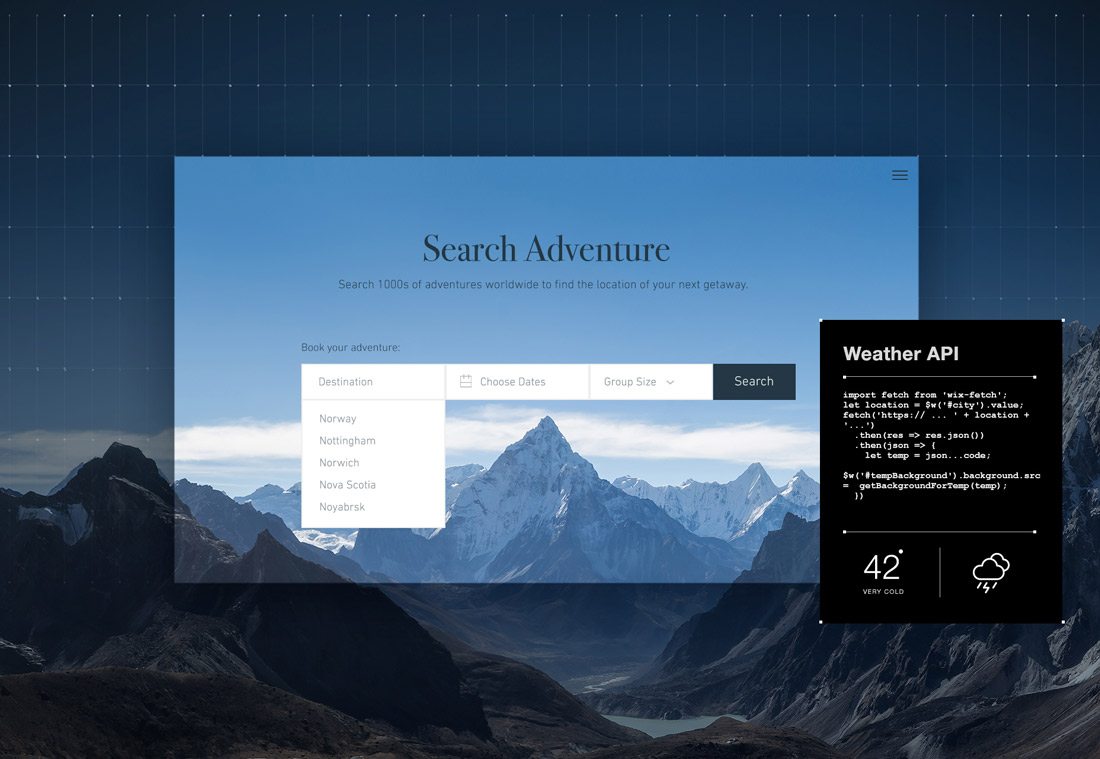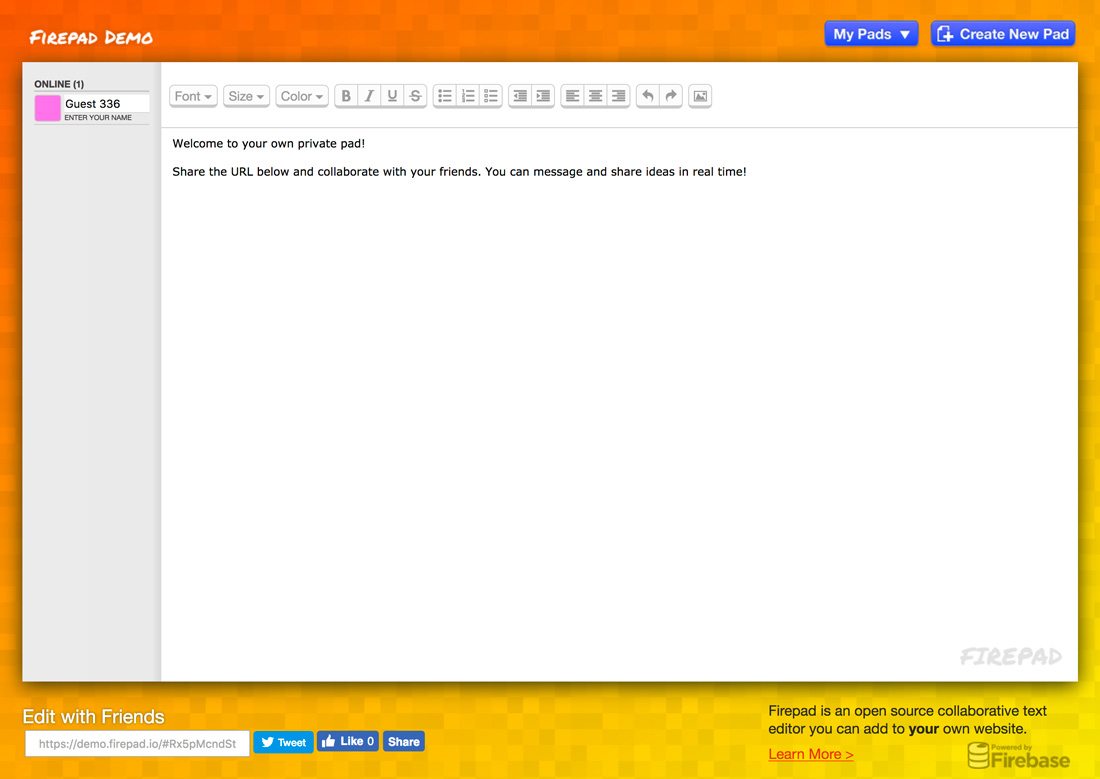6 Key Web Development Trends for 2018
Stay ahead of the curve with a website that functions seamlessly using some of the biggest trends in the industry. While it may seem like development tools and techniques are changing all the time, it is important to stay on top of what’s new and how to use and deploy these techniques in your projects.
So, what are the key development trends for 2018? You will want hone in on progressive JavaScript, web app development and use of chatbots. Here’s a look at each, plus another tool – Wix Code – that will help you get started right away.
One Subscription: Everything You Need to Build a Website
Get everything you need to build your next website with one simple subscription. From $16 per month, get unlimited access to nearly 2 million WordPress themes, web templates, fonts, graphics, and photos.
1. Growth of Vue.js

Vue.js is a progressive JavaScript framework and is growing by leaps and bounds. It’s a top-starred item on GitHub and is a great solution for building user interfaces.
According to the documentation, Vue is “designed from the ground up to be incrementally adoptable, and can easily scale between a library and a framework depending on different use cases. It consists of an approachable core library that focuses on the view layer only, and an ecosystem of supporting libraries that helps you tackle complexity in large Single-Page Applications.”
Vue is growing because of the adaptability of the framework. It’s component-based, uses directives for control flow and DOM manipulation, uses single file components and has limited functionality so it is focused on rendering reactive and interactive user experiences. Plus, Vue allows developers to use alternative languages for CSS, HTML, and JavaScript, so you have some real flexibility there.
2. Wix Code – Hassle Free Web Development

Another trending platform for web development is Wix Code, all-encompassing, allowing you to code and develop in one page, without downloading or learning a bunch of extra tools.
Wix Code is designed to help developers build web apps and more robust websites. (It’s probably not what you immediately think of when you think of Wix, the website builder.)
Wix Code is the developer’s version of a website builder. Unlike other website builders, which focus on premade templates and designs, Wix Code is a developer tool. Key features include a built-in database to manage your content, dynamic pages, and repeating layouts to create content-rich websites. And the ability to add custom form and fully control your website’s functionality using JavaScript and Wix APIs.
The bonus for developers is that you have an open playground on the backend and the design features all of the stunning visuals that you would expect from Wix. Wix Code is the best of both development and design worlds in one package.
The biggest value of Wix Code for a developer is probably that everything is included. Wix Code makes it easier to code because all the supporting functions you need – design, hosting, images, and apps – are included.
Wix Code is changing the landscape of the web development market.
Here’s why: Your workflow will be streamlined with everything in one place. Developers will spend less time trying to get the design right (or hiring help) and more time focusing on user interactions and experiences within websites and web apps. You’ll be able to spend that extra time with clients to ensure they get actually what they want.
Wix Code allows you to change any function within a website. Customize the behavior and data of any Wix component without HTML or CSS changes. APIs and Javascript make it easy to make adjustments.
The best thing about Wix Code is that all the latest technology is built in. While you can still spend time researching trends and technologies, Wix Code already has the tools built in. You don’t have to relearn best practices for creating a web app because you already have the tools at your disposal.
And if you need help, there’s a huge support database with information on how to make the most of Wix Code to build stunning web apps with articles, videos, and examples.
Ready to do this? Try Wix Code today. You might never go back to starting a web development project from scratch.
3. Real-Time Web Apps

As users have shorter attention spans, the need for real-time web apps is growing. Real-time web apps use technology that allows users to get updates and information almost as soon as it is published so that they always have the latest and greatest version.
The technology is already everywhere around us – think Instagram or Twitter – and the Firepad app, above.
Developer Phil Leggetter is probably the most well-known person in this field and keeps a giant database of real-time web app technologies so that you can decide what tools and technologies are the best fit for your projects.
4. Chatbots for Customer Service
Chatbots are everywhere. It’s likely that most of your online conversations with companies – particularly customer service reps – are all powered with a touch of artificial intelligence in the form of a chatbot.
Chatbots can solve problems quickly, 24/7 and give users exactly what they want when they want it. It eliminates the need for a person to be on standby for trouble calls or questions because a chatbot can be programmed to answer most common questions with ease. (The key is programming bots conversationally so that users think a live person is helping them.)
Chatbots are such a big deal, that there’s even an online magazine – Chatbots Magazine – devoted to their development.
5. Single Page Apps

While the popularity of apps started on mobile devices and tablets, you’ll probably design single-page apps for the bigger web this year. Single page apps are accessed just like any other website in a browser but have richer, more dynamic user experiences.
A key characteristic of a single page app is the heavy use of AJAX so communication with backend servers is a little more seamless and doesn’t require a full refresh of the page. Most page rendering actually happens on the client-side of the app, rather than on the back end.
Vue.js (see trend No. 1) is a popular option for building this type of web application.
6. Push Notifications for Web Apps
In addition to more web app usage, more users will want push notifications as part of this experience. Users expect websites to work in the same way as mobile devices and that includes push notifications for almost everything.
A push notification is best described as a reminder to re-engage with a website. Development of push notifications relies on the use of APIs, commonly the Notifications API and the Push API, to power this functionality.
The key element of this development hinges on the idea that users will opt-in for updates and customized content.





